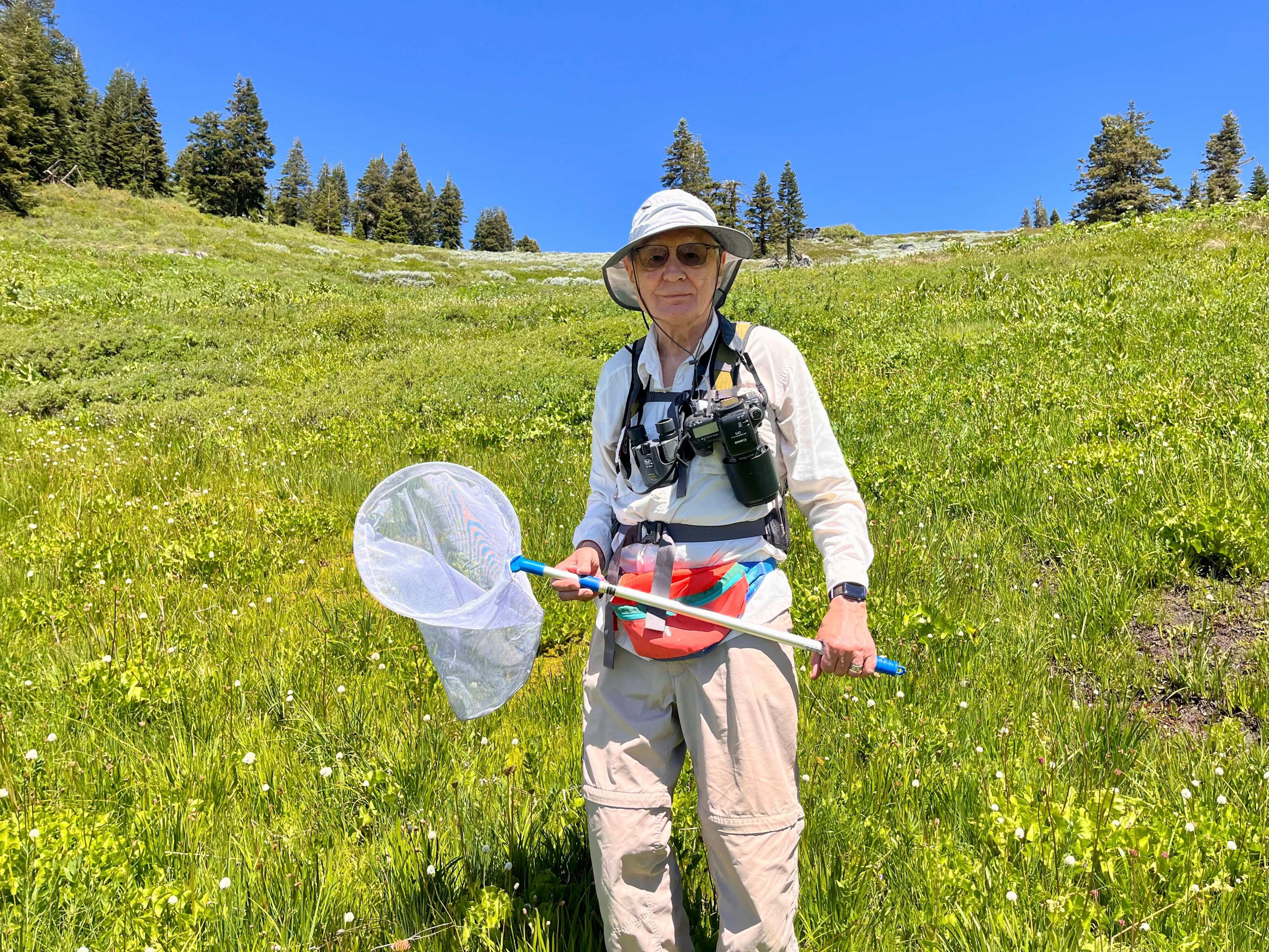
A Photographer’s Passion for Butterflies
David Lee Myers, a dedicated photographer from Ashland, has spent three decades capturing the beauty and diversity of butterflies. His work is not only artistic but also serves a scientific purpose. As the author of Wings in the Light: Wild Butterflies in North America, he contributes to critical butterfly counts in southern Oregon and northern California. His photographs of species like the lilac-bordered copper provide valuable documentation of their unique features.
Myers is not a biologist, but he sees his role as an educator and advocate for nature lovers. He emphasizes that being outdoors and learning about the environment is incredibly rewarding. Recently, he led a group of supporters from the nonprofit Pollinator Project Rogue Valley to Mount Ashland, where they observed various butterfly species feeding on native plants such as sulphurflower buckwheat and coyote mint.
As butterfly populations decline, everyday nature enthusiasts play a crucial role in conservation efforts. Platforms like iNaturalist allow people to upload photos, which are then accessed by scientists at organizations like the Global Biodiversity Information Facility. Capturing clear images of these delicate creatures can be challenging, but Myers offers simple advice: be patient, study flowers or mud puddles, and wait for butterflies to appear. When they do, take close-ups and ensure GPS location is enabled using the free iNaturalist app.
Tips for Better Butterfly Photography
Myers, a former photography instructor, encourages aspiring photographers to compare their work with field guides and join local groups like the North American Butterfly Association, which organizes butterfly counts. He also recommends seeking out local experts to enhance knowledge and skills.
Years ago, while living in Wahkiakum County, Washington, Myers became friends with naturalist Robert Pyle, who wrote Chasing Monarchs: Migrating with the Butterflies of Passage. In 1995, a sudden increase in painted lady butterflies attracted to his yard provided him with the perfect opportunity to capture their intricate details.
Decades later, Myers captured two blue copper butterflies overlapping on a flower, showcasing the male’s bright blue wings and the female’s brown ones. Another memorable shot was an arrowhead blue butterfly laying an egg on a lupine, its caterpillar host plant. He also photographed a two-tailed tiger swallowtail near his home, emphasizing the importance of seizing fleeting moments.
The Art of Capturing Nature
Photography, for Myers, is a personal pleasure and a way to contribute to ecological awareness. He uses a full-frame DSLR camera equipped with a 420mm lens, but he acknowledges that even smartphone cameras can be effective and more portable. His approach involves taking multiple shots to increase the chances of capturing a clear image, especially since butterflies are unpredictable in movement.
He relies on natural light rather than fill-flash, preferring to photograph butterflies engaged in their daily activities—basking, nectaring, puddling, mating, and laying eggs. In the Cascade-Siskiyou National Monument, he discovered a silver-spotted skipper caterpillar hidden in a leaf bundle, highlighting the importance of observing all stages of a butterfly's life cycle.
Expanding Your Horizons
Myers encourages people to look beyond the familiar western monarchs and explore smaller, less-known species. These often go unnoticed on online platforms, despite their ecological significance. He also suggests experimenting with different angles and lighting to create compelling compositions.
For example, shooting from above can reveal shadows and textures, while lighting from behind can add vibrant color. In one instance, he captured a red admiral butterfly perched on a purple teasel, where the flower's design was as important as the butterfly itself.
Sometimes, it's best to simply enjoy the moment. Once, a two-tailed tiger swallowtail landed on Myers’ cheek, and instead of reaching for his camera, he cherished the experience. Later, the butterfly posed against the sun, creating a stunning image featured in Wings in the Light.
Rare Encounters and Lifelong Memories
During a summer butterfly count, Myers encountered an elusive thicket hairstreak nectaring on yarrow in the Metolius Preserve. Despite the challenge, he managed to capture the moment in just 37 seconds. On another occasion, he documented a dramatic encounter between a mourning cloak and a great arctic butterfly fighting over a perch, resulting in consecutive shots that highlighted both butterflies' wing surfaces.
These experiences underscore the importance of patience, preparation, and a deep appreciation for the natural world. For Myers, every photo tells a story, and each moment spent in nature is a gift worth capturing.
